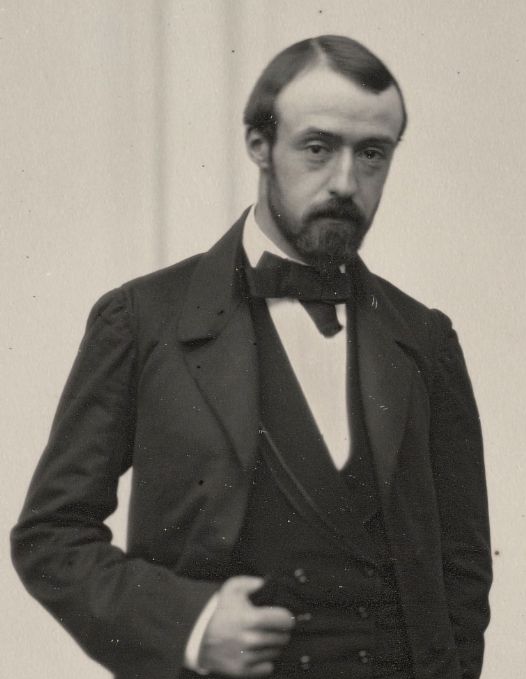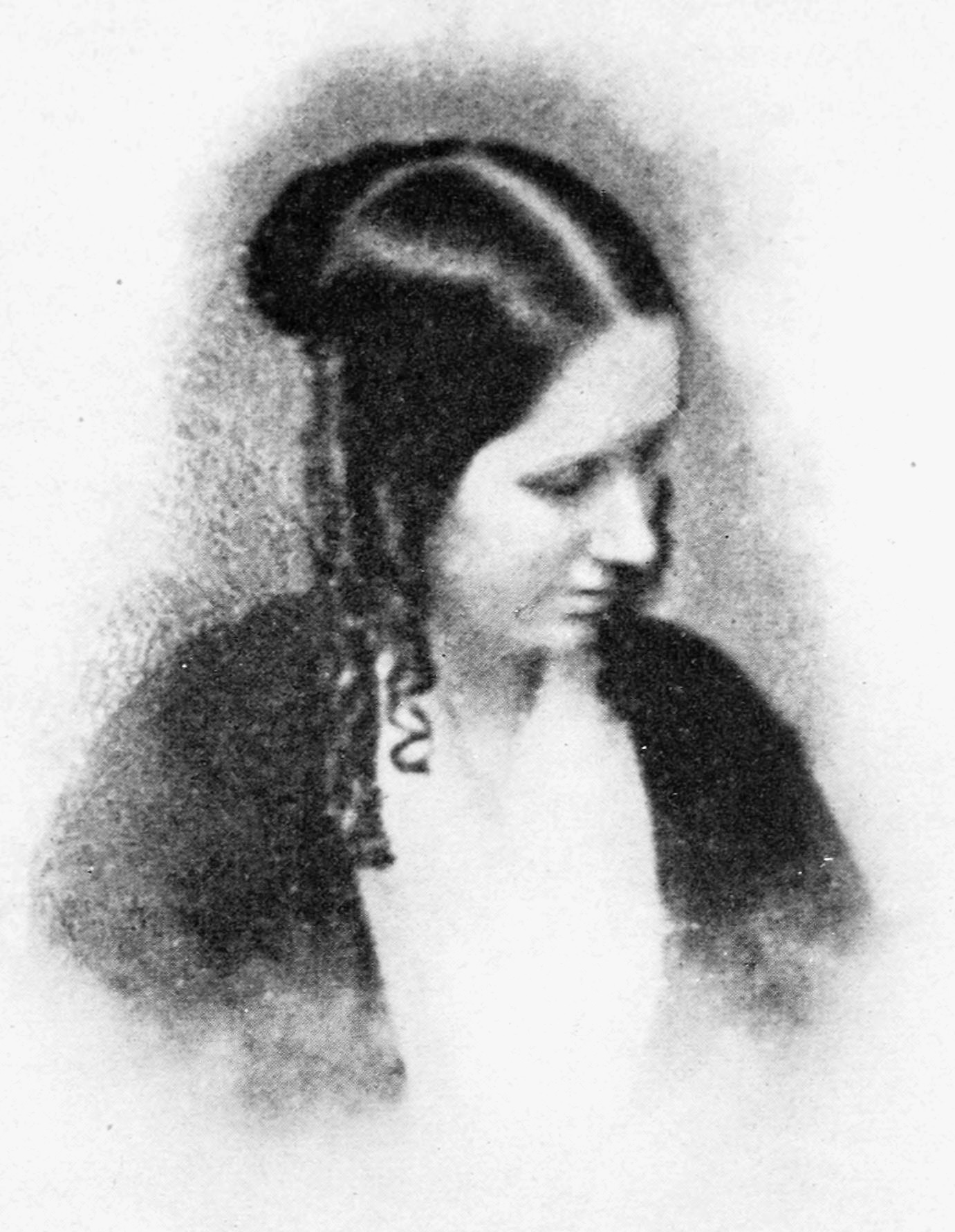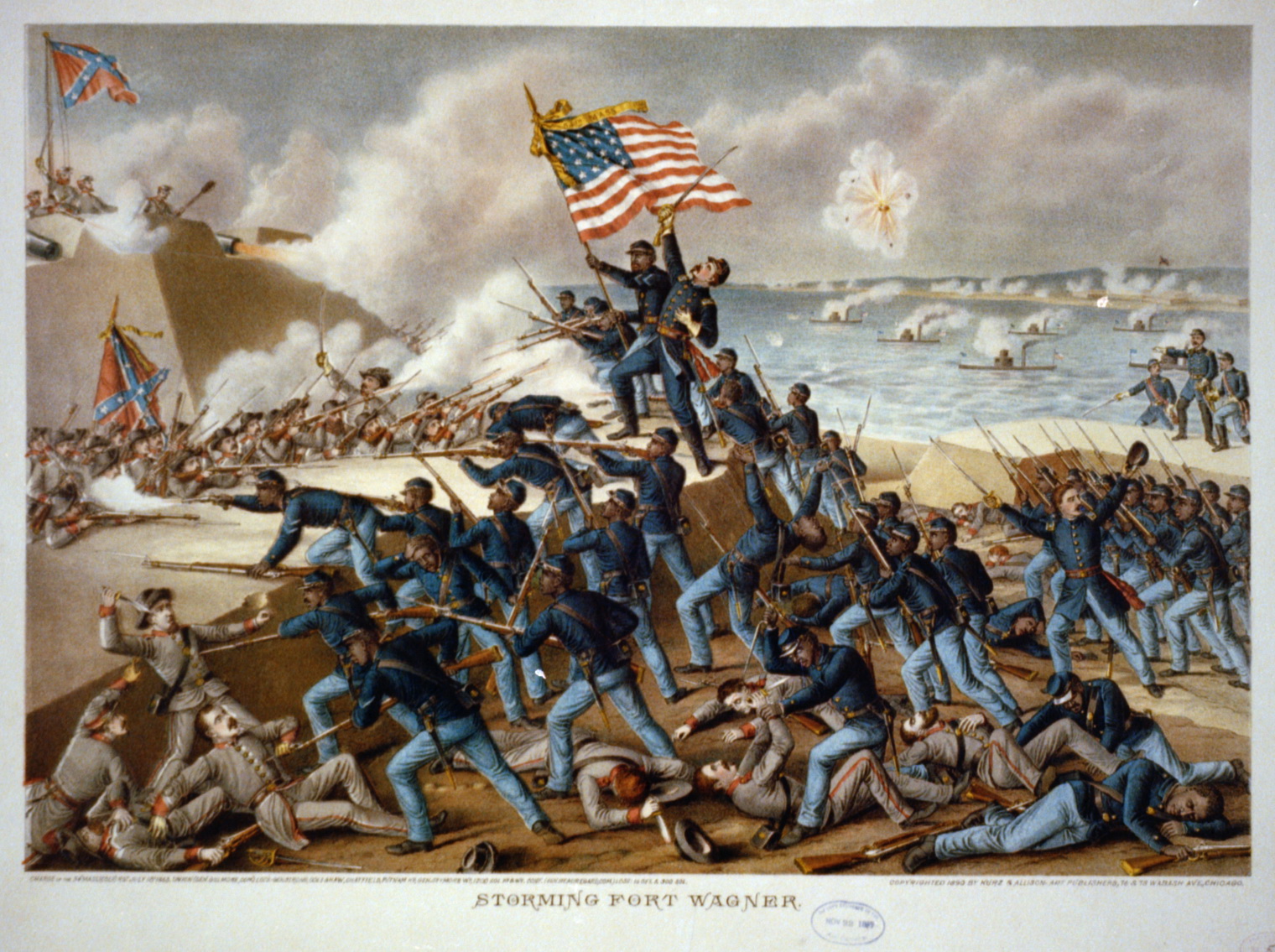|
Quincy Adams Shaw
Quincy Adams Shaw (February 8, 1825June 12, 1908) was a Boston Brahmin investor and business magnate who was the first president of Calumet and Hecla Mining Company. Family and early life Shaw came from a famous and moneyed Boston family. With a net worth of $1,000,000 in 1846, Shaw's father (Robert Gould Shaw, 1776–1853) was one of the wealthiest men in Boston. His mother was Elizabeth Willard Parkman (March 31, 1785April 14, 1853), whose father Samuel Parkman (August 22, 1751June 11, 1824) was the original source of capital upon which her husband built one of the wealthiest and largest business enterprises in Boston at that time. George Parkman (February 19, 1790November 23, 1849), a wealthy Boston physician who was murdered in 1849 in a gruesome and highly publicized case, was Elizabeth's brother. Shaw was good friends with his cousin, American historian Francis Parkman Junior (September 16, 1823November 8, 1893), and the pair travelled together to the American West afte ... [...More Info...] [...Related Items...] OR: [Wikipedia] [Google] [Baidu] |
Boston
Boston (), officially the City of Boston, is the state capital and most populous city of the Commonwealth of Massachusetts, as well as the cultural and financial center of the New England region of the United States. It is the 24th- most populous city in the country. The city boundaries encompass an area of about and a population of 675,647 as of 2020. It is the seat of Suffolk County (although the county government was disbanded on July 1, 1999). The city is the economic and cultural anchor of a substantially larger metropolitan area known as Greater Boston, a metropolitan statistical area (MSA) home to a census-estimated 4.8 million people in 2016 and ranking as the tenth-largest MSA in the country. A broader combined statistical area (CSA), generally corresponding to the commuting area and including Providence, Rhode Island, is home to approximately 8.2 million people, making it the sixth most populous in the United States. Boston is one of the oldest ... [...More Info...] [...Related Items...] OR: [Wikipedia] [Google] [Baidu] |
United States Volunteers
United States Volunteers also known as U.S. Volunteers, U.S. Volunteer Army, or other variations of these, were military volunteers called upon during wartime to assist the United States Army but who were separate from both the Regular Army and the militia. Prior to the enactment of the Militia Act of 1903, the land forces of the United States were divided into three separate and distinctive organizations. * The Regular Army, which was the permanent military establishment of the United States in peace and war. * The Militia of the several states and territories when called into the service of the United States. * Such volunteer forces that the Congress of the United States authorized to be organized for a limited time period as an adjunct to the Regular Army in time of emergencies. Early legislation The term ''Volunteers'' was first used in the ''Act of May 28, 1789'', during the Northwest Indian War, which authorized the President of the United States to accept companies of volun ... [...More Info...] [...Related Items...] OR: [Wikipedia] [Google] [Baidu] |
1825 Births
Eighteen or 18 may refer to: * 18 (number), the natural number following 17 and preceding 19 * one of the years 18 BC, AD 18, 1918, 2018 Film, television and entertainment * ''18'' (film), a 1993 Taiwanese experimental film based on the short story ''God's Dice'' * ''Eighteen'' (film), a 2005 Canadian dramatic feature film * 18 (British Board of Film Classification), a film rating in the United Kingdom, also used in Ireland by the Irish Film Classification Office * 18 (''Dragon Ball''), a character in the ''Dragon Ball'' franchise * "Eighteen", a 2006 episode of the animated television series ''12 oz. Mouse'' Music Albums * ''18'' (Moby album), 2002 * ''18'' (Nana Kitade album), 2005 * '' 18...'', 2009 debut album by G.E.M. Songs * "18" (5 Seconds of Summer song), from their 2014 eponymous debut album * "18" (One Direction song), from their 2014 studio album ''Four'' * "18", by Anarbor from their 2013 studio album '' Burnout'' * "I'm Eighteen", by Alice Cooper common ... [...More Info...] [...Related Items...] OR: [Wikipedia] [Google] [Baidu] |
The Boston Globe
''The Boston Globe'' is an American daily newspaper founded and based in Boston, Massachusetts. The newspaper has won a total of 27 Pulitzer Prizes, and has a total circulation of close to 300,000 print and digital subscribers. ''The Boston Globe'' is the oldest and largest daily newspaper in Boston. Founded in 1872, the paper was mainly controlled by Irish Catholic interests before being sold to Charles H. Taylor and his family. After being privately held until 1973, it was sold to ''The New York Times'' in 1993 for $1.1billion, making it one of the most expensive print purchases in U.S. history. The newspaper was purchased in 2013 by Boston Red Sox and Liverpool owner John W. Henry for $70million from The New York Times Company, having lost over 90% of its value in 20 years. The newspaper has been noted as "one of the nation's most prestigious papers." In 1967, ''The Boston Globe'' became the first major paper in the U.S. to come out against the Vietnam War. The paper's 2002 c ... [...More Info...] [...Related Items...] OR: [Wikipedia] [Google] [Baidu] |
Alexander Emanuel Agassiz
Alexander Emmanuel Rodolphe Agassiz (December 17, 1835March 27, 1910), son of Louis Agassiz and stepson of Elizabeth Cabot Agassiz, was an American scientist and engineer. Biography Agassiz was born in Neuchâtel, Switzerland and immigrated to the United States with his parents, Louis and Cecile (Braun) Agassiz, in 1846. He graduated from Harvard University in 1855, subsequently studying engineering and chemistry, and taking the degree of Bachelor of Science at the Lawrence Scientific School of the same institution in 1857; in 1859 became an assistant in the United States Coast Survey. Thenceforward he became a specialist in marine ichthyology. Agassiz was elected a Fellow of the American Academy of Arts and Sciences in 1862. Up until the summer of 1866, Agassiz worked as assistant curator in the museum of natural history that his father founded at Harvard. E. J. Hulbert, a friend of Agassiz's brother-in-law, Quincy Adams Shaw, had discovered a rich copper lode known as the ... [...More Info...] [...Related Items...] OR: [Wikipedia] [Google] [Baidu] |
Henry Lee Higginson
Henry Lee Higginson (November 18, 1834 – November 14, 1919) was an American businessman best known as the founder of the Boston Symphony Orchestra and a patron of Harvard University. Biography Higginson was born in New York City on November 18, 1834, the second child of George Higginson and Mary Cabot Lee.Perry, Bliss, ''Life and Letters of Henry Lee Higginson'' (Boston: Atlantic Monthly Press, 1921) He was a brother of James J. Higginson and a distant cousin of Thomas Wentworth Higginson.Henry Lee Higginson in the North America, Family Histories, 1500-2000. Eight Generation, page 35. Accessed via ancestry.com (paid subscription site) on 18 August 2022. [...More Info...] [...Related Items...] OR: [Wikipedia] [Google] [Baidu] |
Philip Drinker
Philip Drinker (December 12, 1894 – October 19, 1972) was an industrial hygienist. With Louis Agassiz Shaw, he invented the first widely used iron lung in 1928. Family and early life Drinker's father was railroad man and Lehigh University president Henry Sturgis Drinker; his siblings included lawyer and musicologist Henry Sandwith Drinker, Jr., pathologist Cecil Kent Drinker, businessman James Drinker, and biographer Catherine Drinker Bowen. After graduating from St. George's and Princeton in 1915, Philip Drinker trained as a chemical engineer at Lehigh for two years. Drinker was hired to teach industrial illumination and ventilation at Harvard Medical School and soon joined his brother Cecil and colleagues Alice Hamilton and David L. Edsall on the faculty of the nascent Harvard School of Public Health in 1921 or 1923. He studied, taught, and wrote textbooks and scholarly works on a variety of topics in industrial hygiene; the iron lung itself was originally designe ... [...More Info...] [...Related Items...] OR: [Wikipedia] [Google] [Baidu] |
Louis Agassiz Shaw, Jr , names sometimes translated to English as "Louis"
{{disambiguation ...
Louis may refer to: * Louis (coin) * Louis (given name), origin and several individuals with this name * Louis (surname) * Louis (singer), Serbian singer * HMS ''Louis'', two ships of the Royal Navy See also Derived or associated terms * Lewis (other) * Louie (other) * Luis (other) * Louise (other) * Louisville (other) * Louis Cruise Lines * Louis dressing, for salad * Louis Quinze, design style Associated names * * Chlodwig, the origin of the name Ludwig, which is translated to English as "Louis" * Ladislav and László - names sometimes erroneously associated with "Louis" * Ludovic, Ludwig, Ludwick, Ludwik Ludwik () is a Polish given name. Notable people with the name include: * Ludwik Czyżewski, Polish WWII general * Ludwik Fleck (1896–1961), Polish medical doctor and biologist * Ludwik Gintel (1899–1973), Polish-Israeli Olympic soccer player ... [...More Info...] [...Related Items...] OR: [Wikipedia] [Google] [Baidu] |
Elizabeth Cabot Agassiz
Elizabeth Cabot Cary Agassiz ( pseudonym, Actaea; December 5, 1822 – June 27, 1907) was an American educator, naturalist, writer, and the co-founder and first president of Radcliffe College. A researcher of natural history, she was an author and illustrator of natural history texts as well as a co-author of natural history texts with her husband, Louis Agassiz, and her stepson Alexander Agassiz. Agassiz accompanied her husband on his journey to Brazil in 1865-6 and on the Hassler expedition in 1871-2; of the second, she wrote an account for the ''Atlantic Monthly''. She published ''A First Lesson in Natural History'' ( Boston, 1859) and edited ''Geological Sketches'' (1866). Early life and education Elizabeth Cabot Cary was born on December 5, 1822 into a Boston Brahmin family of New England ancestry. She was born at the house of her grandfather, Thomas Handasyd Perkins, on Pearl Street in Boston, Massachusetts. Her parents were Mary Ann Cushing Perkins Cary and Thomas Gra ... [...More Info...] [...Related Items...] OR: [Wikipedia] [Google] [Baidu] |
Louis Agassiz
Jean Louis Rodolphe Agassiz ( ; ) FRS (For) FRSE (May 28, 1807 – December 14, 1873) was a Swiss-born American biologist and geologist who is recognized as a scholar of Earth's natural history. Spending his early life in Switzerland, he received a PhD at Erlangen and a medical degree in Munich. After studying with Georges Cuvier and Alexander von Humboldt in Paris, Agassiz was appointed professor of natural history at the University of Neuchâtel. He emigrated to the United States in 1847 after visiting Harvard University. He went on to become professor of zoology and geology at Harvard, to head its Lawrence Scientific School, and to found its Museum of Comparative Zoology. Agassiz is known for observational data gathering and analysis. He made institutional and scientific contributions to zoology, geology, and related areas, including multivolume research books running to thousands of pages. He is particularly known for his contributions to ichthyological classification, ... [...More Info...] [...Related Items...] OR: [Wikipedia] [Google] [Baidu] |
Second Battle Of Fort Wagner
The Second Battle of Fort Wagner, also known as the Second Assault on Morris Island or the Battle of Fort Wagner, Morris Island, was fought on July 18, 1863, during the American Civil War. Union Army troops commanded by Brig. Gen. Quincy Gillmore launched an unsuccessful assault on the Confederate fortress of Fort Wagner, which protected Morris Island, south of Charleston Harbor. The battle came one week after the First Battle of Fort Wagner. Although a Confederate victory, the valor of the Black Union soldiers in the battle was hailed, which had long-term strategic benefits in encouraging more African-Americans to enlist allowing the Union to employ a manpower resource that the Confederacy could not emulate for the remainder of the war. Background Fort Wagner, or Battery Wagner as it was known to the Confederates, controlled the southern approaches to Charleston Harbor. It was commanded by Brigadier General William B. Taliaferro. An attempt was made on July 11 to assault th ... [...More Info...] [...Related Items...] OR: [Wikipedia] [Google] [Baidu] |


.jpg)


